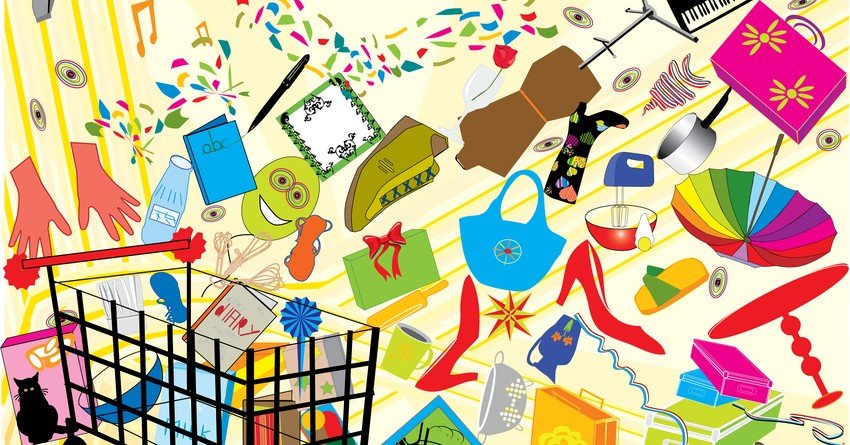
I am the world’s biggest impulse buyer. I once bought a dog hoodie that read, “I’m a pirate dog looking for the boo-tay”. I don’t even have a dog. But after four whole minutes laughing at it I had to buy it.
Last September I bought tickets to what was advertised as a ‘bad emo music rave’.
In 2012 I bought 24 boxes of Maltesers because they were 50 percent off. I’m lactose intolerant – I can’t even eat Maltesers.
But lo and behold, as you can probably figure out, most (all) of these items were an impulse buy. Because impulse buying through both an online sector and physical store is getting easier and easier as companies figure out the science behind it.
The old adage is that money can’t buy happiness, but that’s what the promise of impulse purchases says it will provide.
Impulse purchases are triggered by ‘the art of the deal’. Which states that basically a good deal or good-value item is harder to pass by than any other normal purchase.
Impulse shopping through bricks and mortar stores isn’t dead, but it is slowing down. For customers to actually purchase something on the spur of the moment, they have to spot it — and be in the mood to respond positively.
The art of the impulse shop
Most retailers use what’s called ‘merchandise outposts’, which is where they stock goods and cheap interesting things around the checkout to target impulse shoppers. Truth be told, those well-placed point-of-purchase displays are usually where I’m reminded I need a new pair of socks (thanks, Kmart!).
According to Psychology Today, there are five reasons why we might impulse shop:
1) We love shopping: The simplest explanation for this is just that purchasing something comes with an act of empowerment.
2) The loss aversion switch: This is basically our innate concern to avoid feeling bad in the future if we missed out on a deal.
3) Twisted Heuristics: The art of shopping without being fully conscious. Also a specialty of mine.
4) The desire to save: Again, linking back to the loss aversion switch.
5) Rose-tinted lenses: When we consider an idealized future where we will need that item, it will come in handy or that Ab Circle Pro will turn us into someone who has the motivation to use it.
Nielsen’s recent study on understanding shopping habits says that the impulse shopping routine is split evenly between physical and digital environments. It just depends on the item in question.
The studies, which were general-store based, state that the most impulse on the online sector is general grocery items. Whereas the more impulse in-store is frozen foods, where shoppers are more likely to buy on a whim.

In the middle spectrum falls personal care (1.9 percent impulse online) and pet care, (1.3 impulses through in-store)
This is easier to do in a digital environment as customers aren’t rushed, they’re usually happy in their environment and usually have their card details pre-saved into the device they’re shopping on.
Looking further into the break up for categories, within groceries the most commonly purchase online impulse items are snacks (think 24 boxes of Maltesers) on the sweet side. Then savory snacks. Because people can judge your excessive snack buying regime if you don’t leave the house.

A feeling of instant gratification usually accompanies that of an impulse buy. Whether you’re chucking that packet of gum onto the conveyor belt at the supermarket, right up to impulsively purchasing five swan plants through Trade Me. And yes, they’re still alive and doing well.
Why do we do it?
The most common incentive for the online impulse buy is to offer free shipping — but only after shoppers spend a certain amount. Nearly half of shoppers reported that free shipping caused them to make impulse purchases, according to a 2000 study by The Yankee Group.
The research shows that impulse shopping happens mostly when customers browse through categories rather than searching for a particular item.
In fact, it was more than three times likely, or about 74 percent.

A large chunk of research dedicated to figuring out impulse shopping says that it has less to do with what the retailer does, but more around if the person shopping has an impulsive personality.
This can be a huge benefit for digital marketplaces, because they have a bigger chance of controlling the type of impulse advertising they target, too.
A consumer study carried out by HKMB says that the biggest factor that influences an impulse by is a price discount, with 85.4 percent of people agreeing on the price is the deciding factor.
However, consumers are also sensitive to varying levels of discount in relation to different products and services. For example, 30.9 percent of the users would be willing to purchase dining deals only if discounts are over 50 percent; 26.7 percent of them would purchase other products only if discounts are over 50 percent.
The influencers then factor in necessity, brand and user ratings.

The science behind the impulse
Basically ecommerce isn’t hindering impulse buying in anyway, in fact, it seems to strengthen it as it takes on the ability to target and better market towards impulsive personalities.
The Orbitofrontal cortex in the brain is what drives impulse, and although it is there for survival we use it almost every day. It promotes emotional irregularities, like the urgency you feel when you see a deal you must have.
This cortex, like most, differs from person to person. The more active the more likely the person is to be impulsive in all aspects of their life. My orbitofrontal cortex to a scientist probably looks like a bad emo music night rave.
How can retailers use it to their advantage?
There are ways that retailers can target towards the more impulsive customers. Both science and human nature tell us that people will divert from their shopping list, it is just a matter of stores experimenting with the items available for quick purchase. The reason people make these impulse buys are because it is just so easy.
Triggering an impulse by in store is a matter of trial and error. Getting it right lies in the middle of the unconscious shopper and testing a multitude of tactics in store can help you uncover the right mix to trigger an impulse buy.




